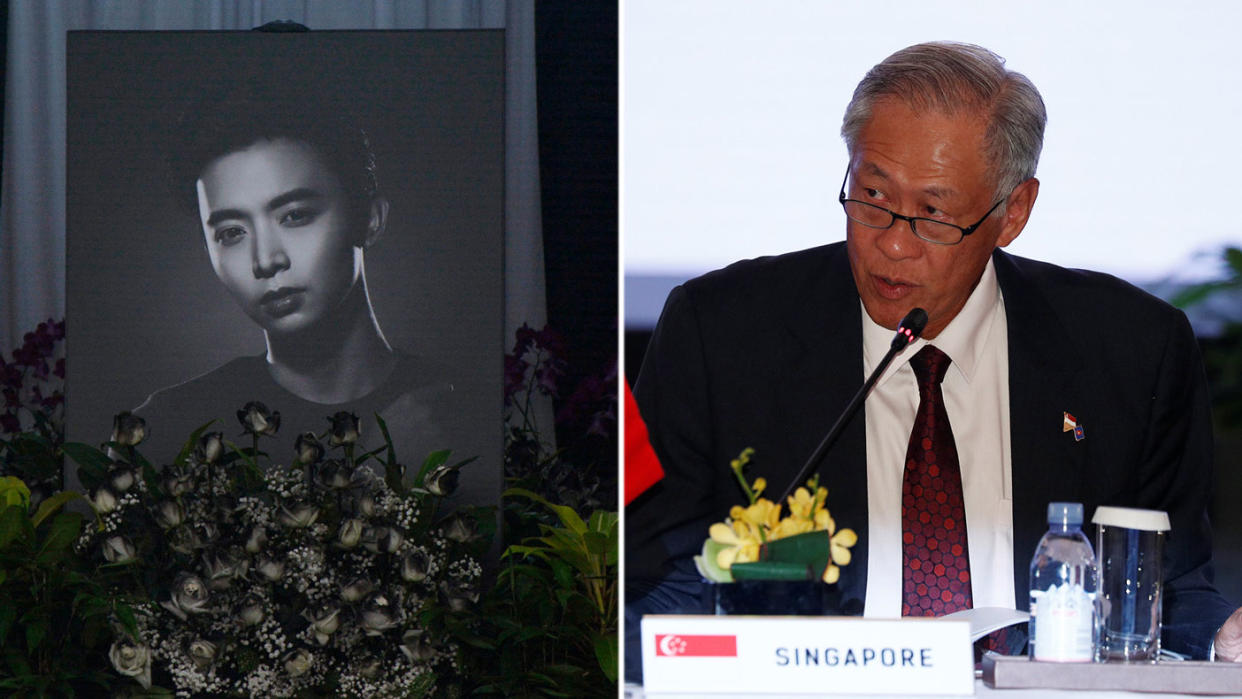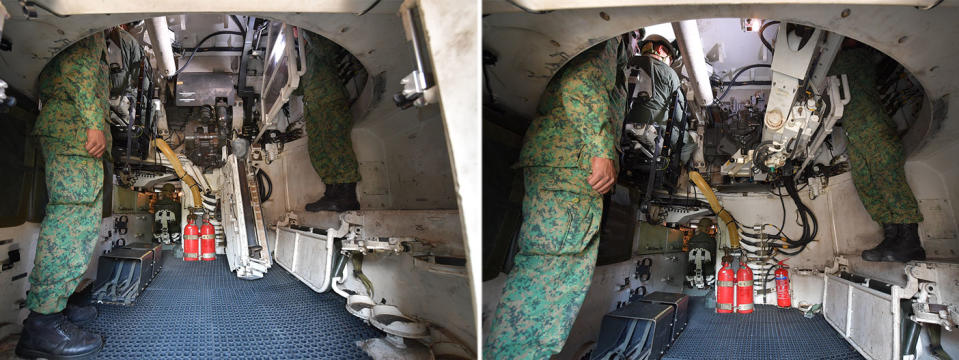Death of Aloysius Pang: Two other SAF personnel in vehicle at time of incident were 'similarly qualified'

At the time of the military training incident that led to the death of local actor Aloysius Pang, the two other Singapore Armed Forces (SAF) personnel who were servicing an artillery weapon with him were similarly qualified to carry out their duties, said Defence Minister Ng Eng Hen in Parliament on Monday (11 January).
The two other men were a gun commander with the rank of Third Sergeant (3SG) and a regular technician with the rank of Military Expert 2 (ME2), said Ng who was delivering a Ministerial Statement on national service training deaths and enhanced safety measures to be undertaken by the SAF.
The former was serving his eighth In-Camp Training (ICT) stint at the time, while the latter has eight years’ experience working on the vehicle – a Singapore Self-Propelled Howitzer (SSPH). They have since been removed from their operational roles and redeployed.
At the time of the incident, the 28-year-old Pang, an armament technician from the 268th Battalion Singapore Artillery, was one of more than 500 soldiers participating in Exercise Thunder Warrior in New Zealand.
He was serving his seventh ICT stint and had been trained to perform maintenance work and repairs for the SSPH since he was a full-time national serviceman.
In his previous ICT, he attended a two-day refresher course, which covered safety procedures during gun movements, and also underwent refresher training on maintenance tasks in New Zealand prior to the incident that took his life.
Crush injuries to chest, abdomen
Corporal First Class (CFC) (NS) Pang’s death on 23 January was the the fourth SAF-training related fatality in 16 months, from September 2017 to January this year.
He suffered crush injuries to his chest and abdomen on 19 January after being caught between the end of the gun barrel, known as a flick rammer, and the interior of a SSPH that he and the two other men were servicing.
Despite undergoing three operations, his condition worsened and he was placed on artificial life support at the intensive care unit in New Zealand’s Waikato Hospital where he later died.
Following Pang’s death, top SAF commanders called for an army-wide safety timeout as well as a reduction in training tempo across the army, navy and the air force.
The timeout, which was partially lifted last Thursday, is one of the longest ever imposed in the SAF.
They also announced the formation of an Inspector-General’s Office (IGO), which will have the power to conduct inspections and audits of safety processes and practices across the SAF. The IGO will report directly to the Chief of Defence Force.
A five-man Committee of Inquiry (COI) was convened on 25 January to investigate the circumstances leading to Pang’s death.
Qualified personnel, refresher training

Some 17 Members of Parliament had filed 20 parliamentary questions on the incident, covering issues such as the experience and state of the maintenance crew, safety procedures and whether there might be a design flaw in the SSPH.
Dr Ng showed the House a video of the safety drill that must be carried out during the lowering of the SSPH gun barrel.
It takes about nine seconds for the gun to be lowered to the horizontal position for maintenance, during which the members of the maintenance crew must occupy “safe positions” within the cabin. The safe positions are meant to be occupied by the gun commander, ammunition loader and charge loaders inside the vehicle.
“All three persons who were in the cabin in this incident had been trained specifically on the SSPH and had conducted similar maintenance on it in the past. During the exercise, both CFC (NS) Pang and the regular technician had conducted maintenance works on the guns daily,” said Dr Ng.
He noted that during Exercise Thunder Warrior, Pang had been involved in the preparation of more than 10 SSPHs, which included servicing and maintaining of the guns.
Inspections of the SSPH have not detected any machine malfunction of the gun lowering mechanism, added the minister.
Dr Ng noted that the SSPH was designed and developed to meet international military standards, and underwent extensive trials and evaluations from 2000 to 2002 before its introduction in 2003.
“Over the last 15 years, more than 1,000 national servicemen and regulars have been trained to operate the SSPH, and about 12,500 rounds fired. There has not been any reported injury of servicemen due to the gun lowering for maintenance, or operating in or firing of the SSPH.”
The minister pointed out that many other militaries operate tracked 155mm guns with similar gun lowering mechanisms, including the US, South Korea and Germany.
Committee of Inquiry convened
The COI panel comprises a judge nominated by the State Courts; a consultant medical specialist; a member of the External Review Panel on Singapore Armed Forces Safety (ERPSS); a member of the Workplace Safety and Health Council; and a senior-ranked NSman.
While the COI has started its investigation, Dr Ng stressed that as CFC (NS) Pang’s death occurred in New Zealand, neither the police force nor the State Coroner have jurisdiction for deaths outside Singapore. Investigations to determine any culpability in this case will be left to SAF’s Special Investigation Branch (SIB) which has jurisdiction under military law.
“Based on SIB’s investigations, the Chief Military Prosecutor will decide if any servicemen are to be prosecuted for criminal or military offences in a military court,” said Dr Ng.
He added, “We owe it to CFC (NS) Pang and his family, indeed to all Singaporeans, to get to the bottom of what happened, and make things right, to ensure the safety of the NS training system as a whole.”
At a Parliamentary sitting last May, Dr Ng said that there has been an average of one NS training-related death a year over the past two decades. He also noted that there were no training-related deaths from 2013 to 2016.
Related stories:
Timeline: Death of actor Aloysius Pang and his return to Singapore
Aloysius Pang’s death: ‘Don’t cry, mom. If you cry, I will cry too’
PHOTOS: Celebrities and fans mourn Aloysius Pang at his memorial
Aloysius Pang suffered ‘major trauma’, complications were ‘expected’: Top army doctor
Singapore Self-Propelled Howitzer: What are the steps to operate it and who are involved?



